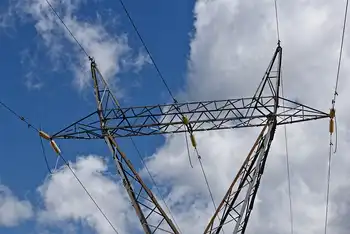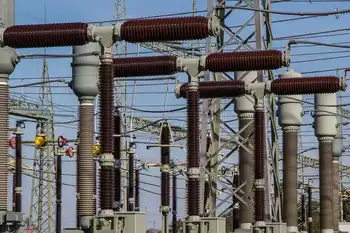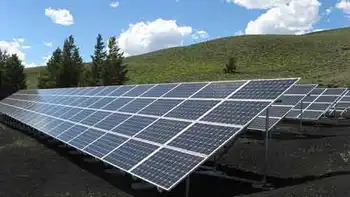Hydro key to cutting emissions
FRAMINGHAM, MASSACHUSETTS - More hydroelectric power from Quebec could help power lights in local living rooms as part of a wide-ranging plan to cut greenhouse gas emissions 25 percent below 1990 levels by the end of this decade.
Nearly a fifth of that overall cut would come from importing more hydroelectric power from Canada, largely through a new transmission line proposed from Quebec to New Hampshire.
"That's still off in the future," said Lisa Capone, spokeswoman for the Executive Office of Energy and Environmental Affairs. "We figure probably it's at least five years away from actually being a reality."
The state's plan says that ultimately the new transmission line, known as the Northern Pass project, could serve up to 15 percent of the Bay State's current electricity demand.
It's not the only change proposed to Massachusetts' electric supply to account for 7.7 percent of the overall 25 percent emissions cut.
Another proposal would require utilities to increasingly favor cleaner or no-emissions fuels for the electricity they sell customers. The plan also anticipates that some of the state's older power plants may shut down under new U.S. Environmental Protection Agency regulations now in the works.
Overall, the state plan released Wednesday calls for everything from more energy-efficient buildings to incentives for drivers to stay off the road in order to meet the 25 percent cut.
The plan is part of the state's broader 2008 Global Warming Solutions Act, which mandates an 80 percent reduction of greenhouse emissions below 1990 levels by 2050.
Imported hydroelectric power would not be new to the region. Canadian hydroelectric already accounts for 8.5 percent of New England's electric consumption, the state's plan says.
A 2010 fact sheet from ISO New England, a nonprofit that runs the region's electrical grid, estimates that figure at 5 percent for the region and just 2 percent for Massachusetts.
New England gets about 38 percent of its power from natural gas, 25 percent from oil, 14 percent from nuclear and 9 percent from coal, the ISO says.
Hydroelectric is relatively low-cost and does not require renewable energy subsidies, the state's emissions plan says, but existing transmission lines are at full capacity.
Hydro Quebec, NStar and Northeast Utilities are working on the Northern Pass project with the Patrick administration's support. Project organizers say the new line could provide another 1,200 megawatts of hydro electricity, enough to power nearly a million houses.
The project is still in early engineering and study phases, with the goal of wrapping up in 2015, the Northern Pass website says.
Some environmental groups, including the Appalachian Mountain Club, oppose the project in its current form. Some of the proposed route would cut through the White Mountain National Forest and other protected lands.
As part of its effort to shift the electric supply to cleaner sources, the state is still looking to other renewable technologies.
An existing requirement of the 2008 Green Communities Act says Bay State utilities must hike their use of renewable energy by 1 percent a year. By 2020, 15 percent of the state's electric supply is supposed to come from eligible technologies, including wind and solar power.
The new plan proposes requiring utilities to improve based on pollution per megawatt, rather than just certain types of technology.
The plan argues that this could help spur the types of changes that have already helped make Massachusetts' electricity portfolio 20 percent cleaner since 2005, such as substituting natural gas for coal and oil as a "bridge" to cleaner sources.
The state would also remain part of the Regional Greenhouse Gas Initiative, a 10-state effort to cut carbon dioxide emissions.
One local renewable energy company gave high marks to the overall plan for a 25 percent greenhouse gas emission cut.
"With this step, Massachusetts continues to be a leader in two ways - environmentally by setting the bar high to reduce greenhouse gas emissions and economically by promoting energy independence and renewable energy jobs within the commonwealth," said Kevin Price, CEO of Renewable Sales in Holliston.
Michael Durand, an NStar spokesman, said the utility is still reviewing the state's plan. But he said NStar played a major role in crafting a proposal to expand its existing residential energy efficiency programs to commercial and industrial customers.
Related News

Adani Electricity's Power Supply Cuts in Mumbai
INDIA - Adani Electricity Mumbai Limited (AEML) recently made headlines by cutting power supply to around 100 homes in Mumbai, sparking discussions about the reasons behind this action and its implications for consumers.
Background of the Incident
The power supply disconnections by AEML were reportedly due to non-payment of electricity bills by the affected households. This action, although necessary under AEML's policies and in accordance with regulatory guidelines, has raised concerns about the impact on residents, particularly during challenging economic times.
Reasons for Non-Payment
Non-payment of electricity bills can stem from various reasons, including financial hardships, disputes over billing accuracy,…



